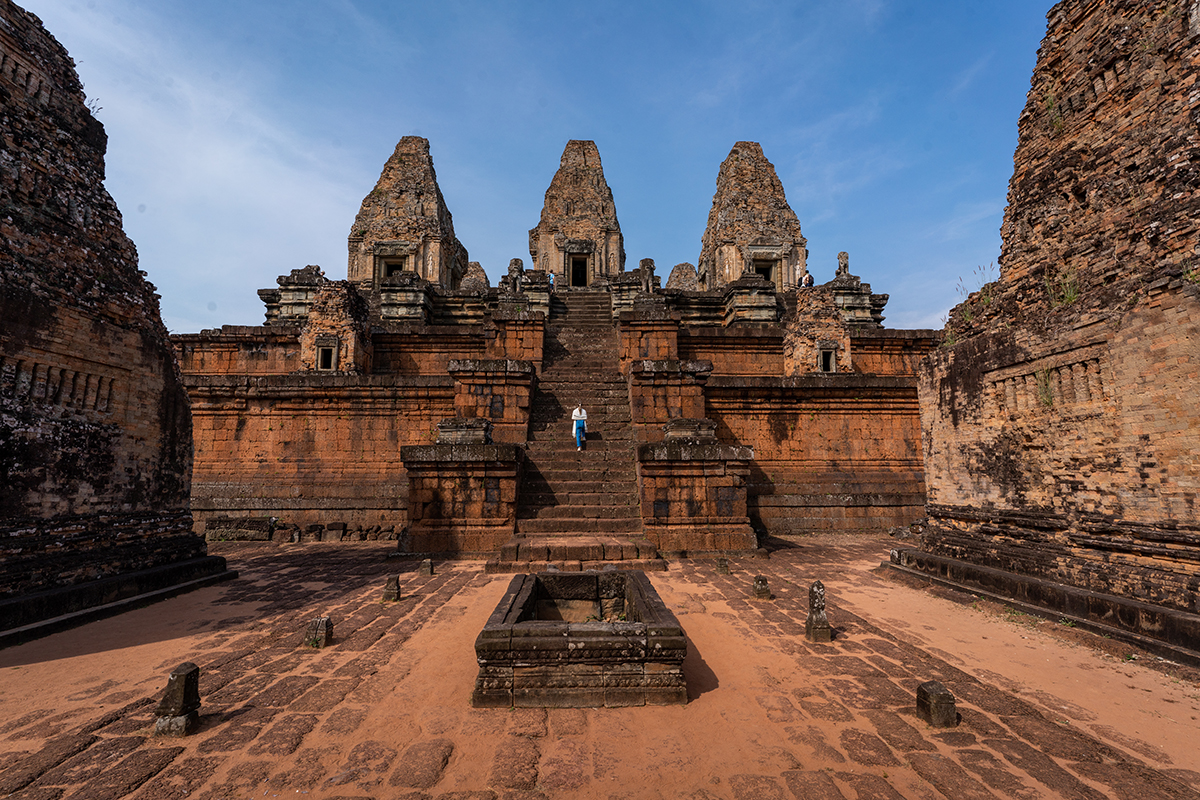Destination: Southeast Asia
Sentry Kelly explores the landscapes and ancient temples of Cambodia, Thailand, and Vietnam with his Tamron 17-28 F2.8 wide-angle and 35-150mm F2-2.8 zoom lenses.
Share the article:
More Photo Tips | Video Gallery | Photo Gallery | Enewsletter sign-up
By Jenn Gidman
Images by Sentry Kelly
About four years ago, Sentry Kelly and his wife, Isabel, decided they’d had it with the traditional 9-to-5. Isabel transitioned to become a full-time traveling nurse, Sentry dove full time into photography, and they hit the road with their dog, Fitz, in a converted RAM ProMaster to live the “van life.” “We started traveling the country, launched our Instagram page, then branched out to international travel,” he says. “We’ve been everywhere from rock climbing in Yosemite to exploring the wilds of Patagonia.”
One of their most recent adventures overseas was a trip to Southeast Asia—“my wife’s dream”—including Thailand, Vietnam, and Cambodia. The journey offered Sentry the chance to take photos of some of that region’s ancient temples, including the famous Angkor Wat, said to be the largest religious structure in the world. For this trip of a lifetime, Sentry brought his Tamron 17-28mm F/2.8 Di III RXD wide-angle and 35-150mm F/2-2.8 Di III VXD all-in-one zoom, both for his Sony mirrorless camera system.
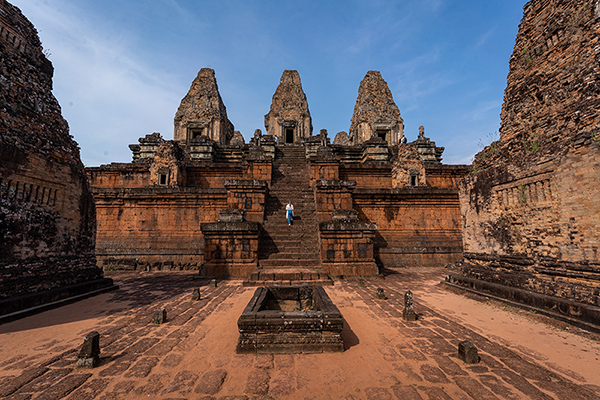
17-28mm (17mm), F10, 1/320 sec., ISO 100
Click image to view larger
“I love having a wide-angle lens with me when I travel, and the 17-28 is so compact and lightweight,” Sentry says. “I barely notice I’m carrying it around when I’m checking out the sights, and it’s very helpful when I’m doing treks and climbs and don’t want to be weighed down. The 35-150mm, meanwhile, is the most capable lens I’ve ever owned. I shoot landscapes with it, portraits, even astrophotography. The image quality on both lenses is terrific, and the fast apertures I’m able to achieve allow me to shoot in less-than-ideal lighting conditions, which you encounter often when you’re on the road.”
Whether he’s on the other side of the globe or exploring closer to home, Sentry wants his adventure and travel photography to transport his viewers to another place and time. “It can be difficult to express how epic or beautiful a location is to someone who wasn’t there with you,” he says. “My goal is to take photos from a perspective that makes you feel like you were right by my side.”
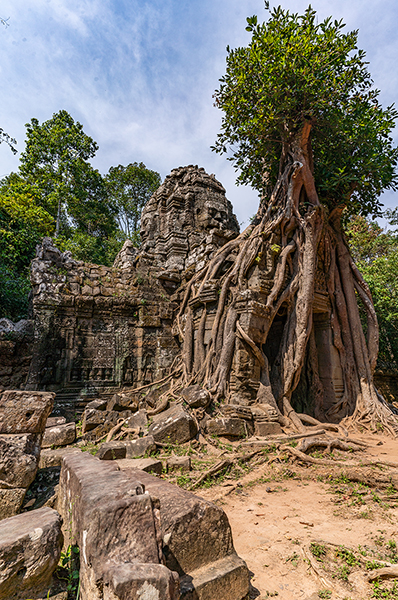
17-28mm (17mm), F11, 1/640 sec., ISO 100
Click image to view larger
SENTRY’S QUICK TIPS
Alternate capturing planned and spontaneous photos.
I always have my must-have photos. But there are sometimes moments that emerge in the spur of the moment—maybe the light hits a nondescript part of a temple a certain way that makes the scene magical, or perhaps I’ll see something during a climb I didn’t even know existed.
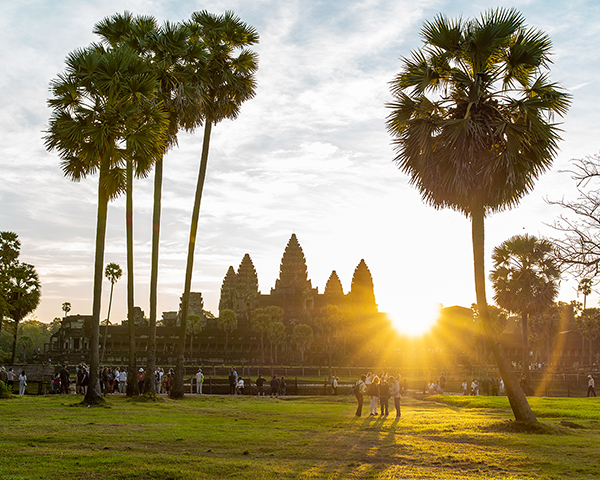
35-150mm (35mm), F6.7, 1/60 sec., ISO 100
Click image to view larger
Put your own spin on landmarks—but don’t be afraid of the old spin.
Iconic structures like Angkor Wat have been photographed so many times that it can feel impossible to do something new. When I’m going to a famous site, I look for photos already taken that stand out. When I get to the site, the first thing I do is re-create those images I admire. Then I’ll take the time to get creative, experimenting with different lighting, angles, framing, and focal lengths. I would hate to get caught up with my experimental photos, which might not work out, and leave a place I might never see again without at least one decent photo, even if it’s a more standard, “touristy” one.
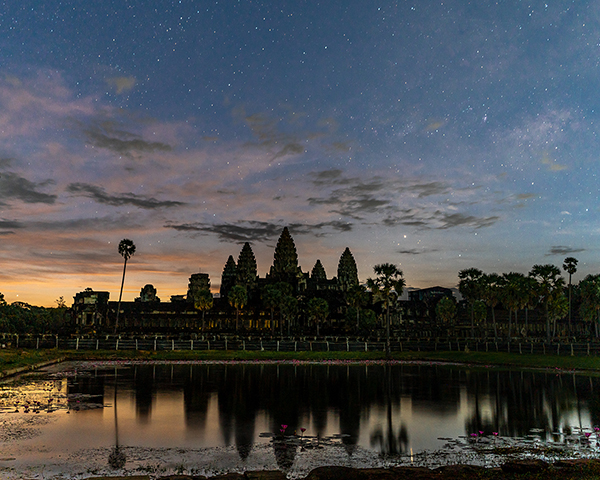
17-28mm (28mm), F2.8, 20 sec., ISO 800
Click image to view larger
Embrace midday light.
The light is so much easier to work with during the golden hour after sunrise and before sunset. But when I’m on vacation, I can be a little more laid-back—meaning I might not get out to a site when it’s bathed in optimal light. I find myself shooting a lot in the midafternoon, which is perfectly fine if you learn how to use a polarizer and neutral-density filters, and if you study how light and shadow works during that time of day. By learning to shoot in every type of lighting, you give yourself a lot more flexibility.
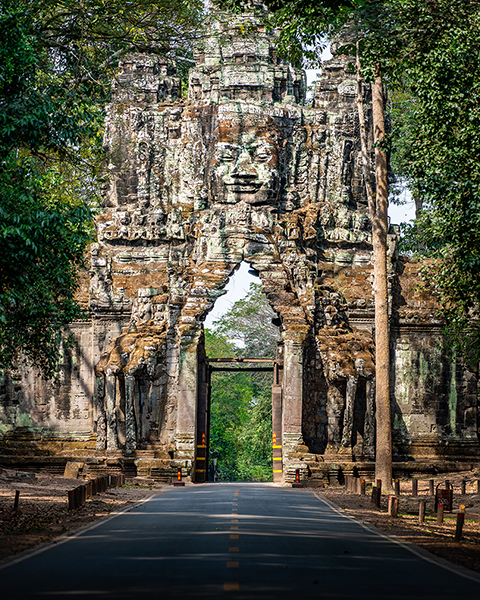
35-150mm (150mm), F3.5, 1/3200 sec., ISO 200
Click image to view larger
Don’t forget people and wildlife in your images.
Traveling in Southeast Asia, or anywhere, isn’t just about documenting the architecture and landscapes. Capturing images of the creatures that live there, as well as locals and visitors, adds life to your images.
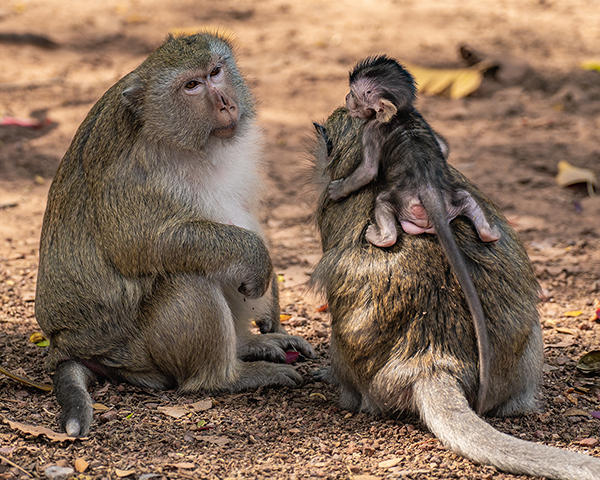
35-150mm (150mm), F2.8, 1/1000 sec., ISO 100
Click image to view larger
It can also tell a story. My wife was taking in one of the temples at sunset, and including her in the image added something to the photo it might not have had otherwise. An ancient building is just a building, but when there’s a person in the photo, you might think: Someone was staring at that building at sunset in that same way thousands of years ago. It’s a moment of contemplation that I love being able to convey through photography.
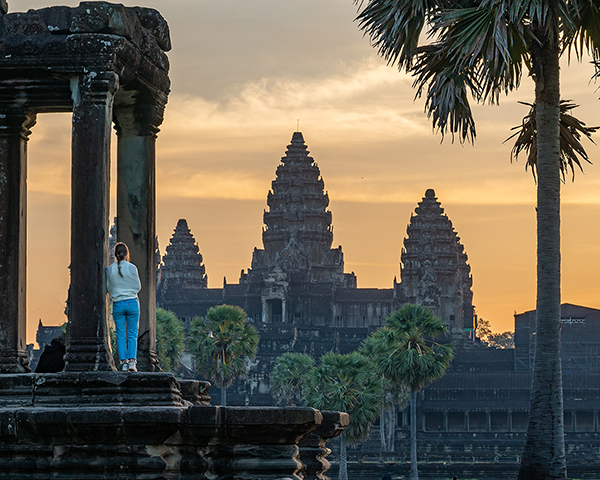
35-150mm (69mm), F6.3, 1/100 sec., ISO 100
Click image to view larger
To see more of Sentry Kelly’s work, check out his website and Instagram.
More Photo Tips | Watch Videos | Learn More About Tamron Lenses | Photo Gallery
